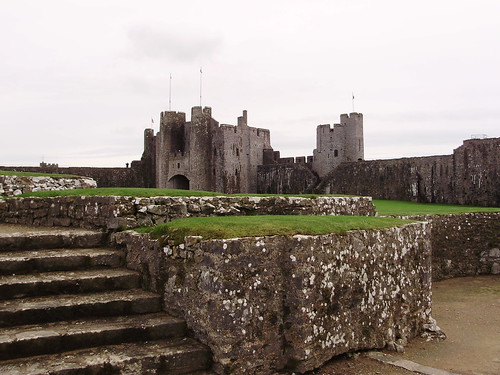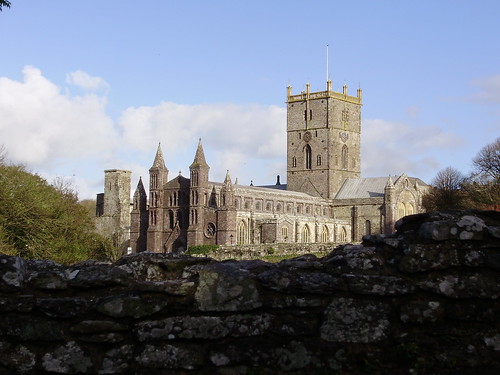The south of Wales seems a little less wild than the north. We explored St. David’s peninsula, beginning with Pembroke in the north and then St. David’s, Britain’s smallest town, in the south.
Pembroke Castle is known as the birthplace of the Tudor Dynasty. Of all the castles we visited, it is the most re stored with floors in the towers that can be reached by the winding stone stairs. There were extensive exhibits on both the history of the castle as well as England itself.
stored with floors in the towers that can be reached by the winding stone stairs. There were extensive exhibits on both the history of the castle as well as England itself.
From Pembroke, we headed north to St. David’s to visit the cathedral and the ruins of the bishop’s palace next door. Our drive took us along St. Bride’s Bay and we stopped at Solva for lunch.
The cathedral is lovely. It is built on the site of a monastery originally built in the 6th century. Tradition says that St. David was born in the to wn in 5oo AD. The cathedral became a popular pilgrimage site during the middle ages. Throughout its long history, it has been attacked by Vikings, nearly destroyed during the Reformation and almost abandoned in the 20th century. We wandered through its chapels, appreciating the tombs of nobles and knights as well as its treasury of church relics.
wn in 5oo AD. The cathedral became a popular pilgrimage site during the middle ages. Throughout its long history, it has been attacked by Vikings, nearly destroyed during the Reformation and almost abandoned in the 20th century. We wandered through its chapels, appreciating the tombs of nobles and knights as well as its treasury of church relics.
Behind the cathedral are the ruins of the  bishop’s palace. Built by Bishop Gower in the 13th century, you can see the remains of large rooms and imagine how it must have looked when the bishop lived there. It is quite picturesque and well sign posted.
bishop’s palace. Built by Bishop Gower in the 13th century, you can see the remains of large rooms and imagine how it must have looked when the bishop lived there. It is quite picturesque and well sign posted.
We went into the tiny town of St. David’s and had tea at The Sampler Tea House. We haven’t had official tea yet so this was a nice way to end the day. There was a warm fire in the cozy shop, which featured embroidered samplers, and we ate cucumber sandwiches, scones, and Bara Brith, traditional Welsh fruit cake.
